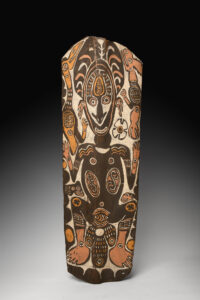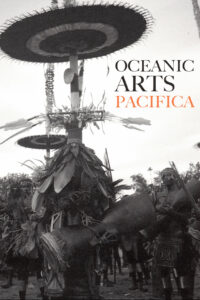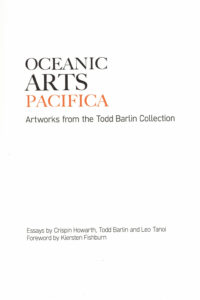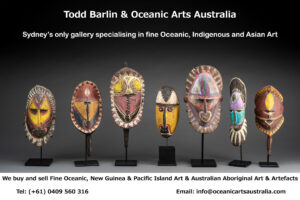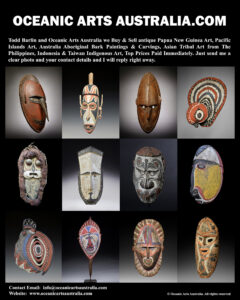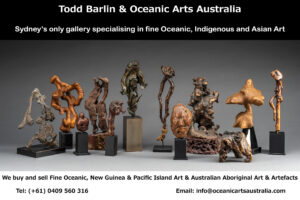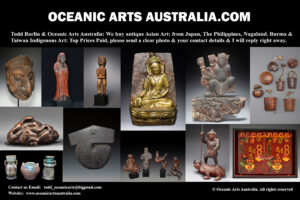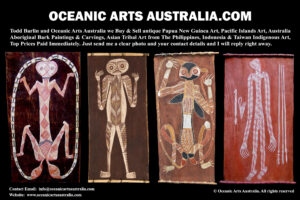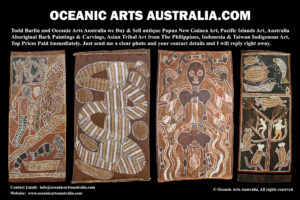A Fine New Guinea Sago Spathe Painting Keram River Lower Sepik River Area East Sepik Province Papua New Guinea
| Collection No. | T-5553 |
|---|---|
| Size | Height 112cm |
A Fine New Guinea Sago Spathe Painting from the Keram River Area in the Lower Sepik River Area of the East Sepik Province of Papua New Guinea
Throughout New Guinea, men’s ceremonial houses or Haus Tambaran were the primary focus for painting and sculpture. This beautiful painting represents a specific clan’s ancestors’ spirits or supernatural beings & totemic animals like birds.
Typically, entry into the ceremonial house is restricted to initiated men, although in some cases, women and children can enter under certain circumstances for specific events. Ceremonial houses serve as the venue for nearly all important male religious rites – such as initiation rites for young boys – and at other times function as meeting houses or informal gathering places. Their structure and the way they are decorated can take on many different local forms and styles.
Paintings are made on sheets of bark or sago, the bark-like bases of the leaves of the sago palm tree, which are trimmed and flattened to create a flat roughly rectangular surface that tapers slightly according to the natural form. After a curing process, the artist covers the smooth side of the sheet with a wash of black clay. The main outlines of the design are laid out in clear water, retraced in paint, and then filled in with colour. Although one man lays out the design, an assistant may perform the work of infilling and painting the bordering dots.
When completed, the paintings are tied to the rafters on the underside of the ceiling with lengths of split cane. The panels are arranged lengthwise along the axis of the house, with a few rows placed laterally at its midpoint. The midpoint forms not only the center of the structure–the most ritually important area–but also roughly indicates the sectors allotted to each clan evoking the strength, unity, and identity of the village clans, whose members gather on the earthen floor beneath them to perform religious rites or initiation ceremonies.
Provenance: The Todd Barlin Collection of New Guinea & Oceanic Art
See my new EXHIBITIONS GALLERY showing the Museums and Art Galleries Exhibitions that I provided artworks for over the past 40 years. There is the link to the article about my artworks published in the prestigious Louvre Magazine in 1996
I have artwork for Museums and art Galleries but also for collectors at every stage of their collecting. I want to encourage people to explore the fine art of New Guinea & West Papua and the Pacific Islands and to be able to see and touch the artworks in a relaxed and friendly manner in my Sydney Gallery. I would like to invite you to visit my gallery and see the artworks in person and also look at my website www.oceanicartsaustralia.com where there are many Galleries & Sub Galleries to explore.
My Gallery of nearly 40 years is the last physical gallery in Sydney that specializes in New Guinea and Oceanic Art. Sydney is very close to New Guinea & the Pacific Islands where all of these amazing artworks came from, Australia’s closest neighbors.
To see many more rare items and the finest masterpieces, please make an appointment with us to visit the gallery.
For all inquiries, please contact us

